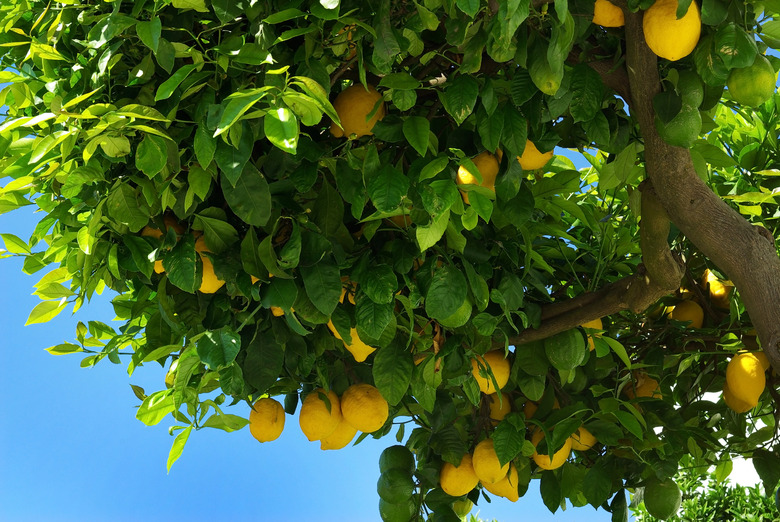What Plants Can Be Used As A Companion For A Lemon Tree?
We may receive a commission on purchases made from links.
Whether used for companion planting or integrated in a garden's overall design, many plants have temperature, soil, water and light requirements similar to a lemon tree (Citrus limon) and grow well with it. The lemon tree is hardy outdoors all year in U.S. Department of Agriculture plant hardiness zones 9 through 11 and reaches a height of up to 20 feet. As they are for all citrus trees, well-draining soil and regular water are essential for a lemon tree.
Lemon Tree Companion Planting
Lemon Tree Companion Planting
The idea behind companion planting is that certain garden plants enhance the growth of other plants. One way this happens is through the attraction of insects that feed upon the pests that may cause gardens to fall out of balance.
A lemon tree can have many pests, but annual herb plants such as dill (Anethum graveolens) and cilantro (Coriandrum sativum) attract beneficial insects that include green lacewings and ladybugs, which have larvae that consume pests such as aphids, mites and scale. Another citrus pest is the mealybug. Perennial plants such as yarrow (Achillea millefolium, USDA zones 3-9) and black-eyed Susan (Rudbeckia spp., zones 3-9) attract one of the mealybugs' natural enemies, the hoverfly. All of these plants are effective companions for a lemon tree.
Mediterranean Garden Companion Plants
Mediterranean Garden Companion Plants
Another way to select companion plants for a lemon tree is through garden design style. A lemon tree is a classic focal point for a Mediterranean-style garden. The Mediterranean-area native bay laurel tree (Laurus nobilis, zones 8-10) and the U.S. native evergreen Carolina cherry laurel (Prunus caroliniana, zones 7-10) complement a lemon tree and can be pruned into formal shapes if desired.
Bay laurel can grow up to 60 feet tall in its native habitat but usually reaches 8 to 10 feet tall elsewhere. Its leaves and oil, however, cause an allergic reaction in some people. Carolina cherry laurel grows 20 to 40 feet tall.
Provide contrast for your lemon tree in a Mediterranean-type garden with perennials that feature textured silvery or gray foliage. They include lavender (Lavandula spp., zones 5-10, depending on species and cultivar), and Powis Castle artemesia (Artemisia 'Powis Castle,' zones 6-9). If you prefer a Mediterranean ground cover near your lemon tree, then plant creeping rosemary (Salvia rosmarinus 'Prostratus,' zones 7-11)
Fragrant Garden Companion Plants
Fragrant Garden Companion Plants
The sweet scent of blossoms in spring precedes the fruits on a lemon tree. Combining fragrant plants with the tree can create a garden that is a feast for the senses. For example, fragrant tea olive (Osmanthus fragrans, zones 8-11) also has perfumed blooms in spring, as do certain roses (Rosa spp., zones 2-10). Plants that have aromatic foliage include scented-leaved geraniums (Pelargonium spp., zones 10-11) and lemon verbena (Aloysia citriodora, zones 8-10).
Edible Garden Companion Plants
Edible Garden Companion Plants
A lemon tree is right at home in a garden with vegetables, herbs and other fruit plants. Try a dwarf lemon tree in a raised bed with colorful Swiss chard (Beta vulgaris [Garden Beet Group]), which is an annual, garden strawberries (Fragaria × ananassa, zones 5 through 9), herbs and plants that have edible flowers, such as nasturtiums (Tropaeolum spp.). Another option is to combine a standard-size lemon tree with other citrus trees to form a grove.
